An Ultimate Guide to the Master Boot Record (MBR)
In this article, you'll learn:
- I. What Is the MBR?
- II. Understanding of Master Boot Record
- III. How to Check and Use MBR?
- IV. Troubleshooting Problems of MBR
- V. FAQs about Master Boot Record
Most people will face a dilemma while choosing MBR mode when setting up their computer or new HDD/SSD. The search result briefly tells you that the computer won't boot without the master boot record. Does it enough to convince you to select it? I am sure you need more facts about what is MBR, how to use MBR and more troubleshooting. This guide is far beyond the shallow definition and shows EVERYTHING about MBR.
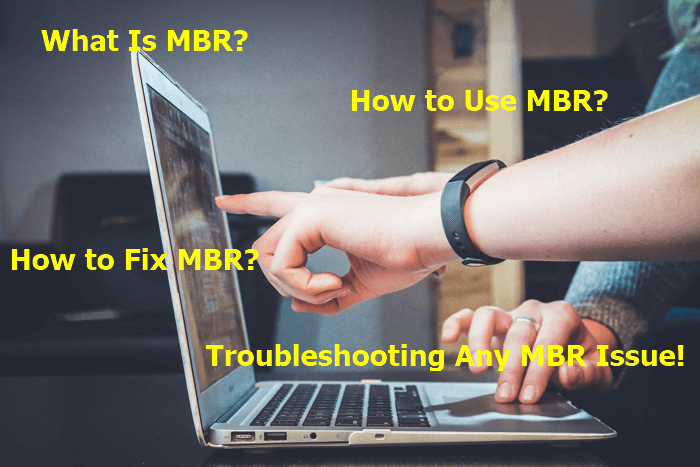
I. What Is the MBR?
What does MBR stand for? MBR stands for Master Boot Record. It is a small piece of code responsible for loading the operating system on your computer. The MBR also contains information about the partitions on your hard drive and how they lay out. If you have ever installed an operating system, you may have seen a prompt asking if you want to install it in MBR or GPT mode. This refers to the type of partitioning used on your hard drive.
Where Is the Master Boot Record Located?
The master boot record code is stored in the first sector of your hard drive (sector 0). It is important to note that this sector is not part of any partition, which means that if you delete a partition, the MBR code will still be there.
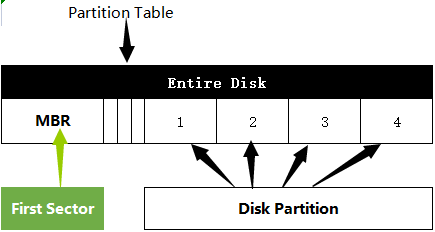
How the Master Boot Record Works
When PC is powered on, the MBR start to launch the BIOS program stored in the read-only memory. It means when you turn on your computer, the MBR code runs first and loads the operating system from the hard drive.
Master Boot Record Working Process:
1. System startup self-check - BIOS checks the system hardware and CMOS Settings.
2. Read the master boot record - detect bootable devices, BIOS reads the MBR sector into memory.
3. Check whether the end flag of the MBR is 0000:7C00H equals 55AAH. When the boot device meets the requirements, the BIOS transfers control to the MBR to start the operating system.
II. Understanding of Master Boot Record
1. Feature of MBR
The MBR code is usually around 512 bytes in size, and it contains three main parts:
- The master boot code: This is the code that loads the operating system. It is typically written in assembly language, and it is peculiar to the hardware on your computer.
- The partition table: This table contains information about the partitions on your hard drive. It includes the starting location and size of each partition and the type of file system used (e.g., NTFS, FAT32, etc.).
- The master boot record signature: This is a small piece of code used to verify that the MBR code is valid. If this signature is not present or incorrect, your computer will not be able to boot.
2. Structure of MBR
Look at what a clear form of MBR looks like:

3. Limitation of MBR
While MBR has become the standard in disk partitioning, it does have some limitations.
- It can only support up to four primary partitions. MBR can be limiting if you need more than four partitions on your system.
- MBR does not work with drives larger than 2TB.
- MBR is incompatible with specific file systems, such as ReFS.
While MBR is the most commonly used type of disk partitioning, it is essential to be aware of its limitations before using it on your system.
4. Differences between MBR and GPT
Some users may find that your partition style displays GPT if you check partition style from disk management. You may wonder: What is GPT, and what is the difference between MBR and GPT? GPT, GUID Partition Table, stands for the great successor of MBR. Some of the different points include:
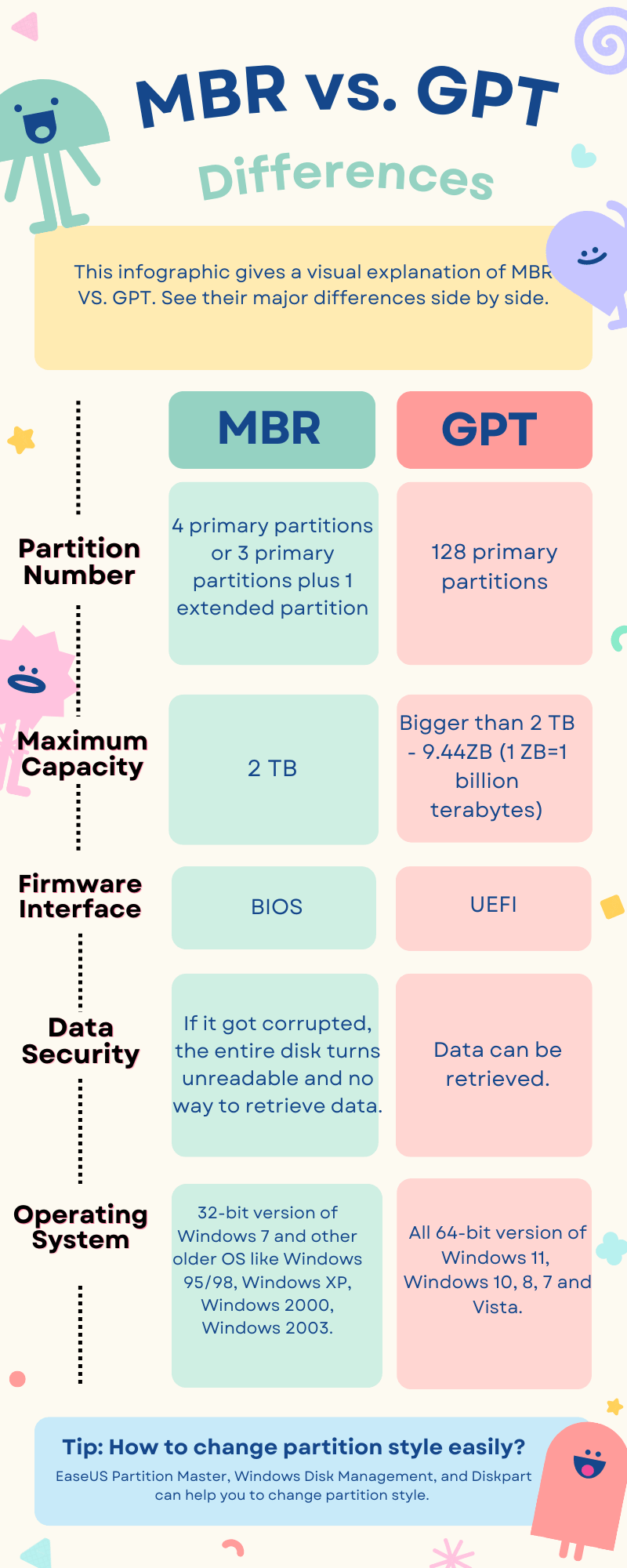
Still, have problems? Read on a depth tutorial on MBR vs. GPT.
III. How to Check and Use MBR?
Once you know the basic information of MBR, it's time to check and use MBR.
How to Check If A Disk Uses MBR or GPT?
MBR or GPT for SSD? Should I Choose MBR?
How to Set Up to Boot from MBR
How to Convert MBR to GPT in Windows 10/11
How to Check If A Disk Uses MBR or GPT?
Yes! Now you get the basic knowledge of what MBR is and where MBR is on Windows. Let's check how to check if a disk is MBR or GPT in Windows. To see partition style:
Step 1. Right-click the Windows icon and select Disk Management from the menu.
Step 2. Right-click Disk 0 and click on the Properties option.

Step 3. Go to the Volumes tab, and you can check either Master Boot Record (MBR) or GUID Partition Table (GPT) on the Disk Information box.

GET MORE METHODS
Open this complete guide on how to tell if Windows is GPT or MBR and learn more instructions along with partition manager software and diskpart.
For the table information mentioned above, GPT performs better in terms of partition, number, OS support, and data security, even doing better on firmware interface if checking highlights of UEFI vs. BIOS. However, the MBR disk works with the older Windows version. So please be rational and continue to the next part. The recommended tips for choosing MBR or GPT for SSD will help you figure it out.
MBR or GPT for SSD? Should I Choose MBR?
Users are going to make a choice when it comes to MBR or GPT for SSD after plugging the hard drive on Windows. It is essential to consider the different benefits of each option. MBR provides a more efficient way to store data and is less likely to experience errors. However, GPT offers a larger capacity and is more resistant to corruption.
Tip 1. If the hard drive capacity exceeds 2 TB, we recommend the GPT partition style because the MBR is reached for 2 TB at maximum.
Tip 2. SSD enjoys a faster speed than HDD in booting Windows. To be compatible with that, we recommend UEFI. Based on UEFI boot, GPT is a good choice.
Tip 3. Choosing MBR or GPT also refers to the existing operating system. If the OS is Windows 7 or earlier version, choose MBR. If it is Windows 8 or higher version, you can select either MBR or GPT.
Ultimately, the best option for you depends on your specific needs and preferences.
How to Set Up to Boot from MBR
Step 1. Click the Windows icon and choose "Restart" to boot your Windows PC.
Step 2. Press the manufacturer's key to access the BIOS menu.
For the common PC: F1, F2, F10, F11, F12, Delete, Esc.
Step 3. Use the Up and Down arrow keys. Move to the Boot tab and choose UEFI/BIOS Boot Mode. Choose Legacy.
Step 4. Press F10 to save changes and exit.
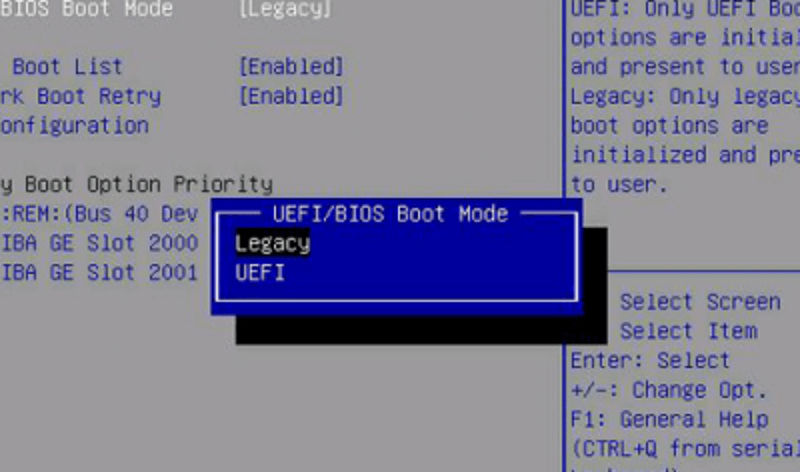
DEPTH TUTORIAL
Still curious? Click here to learn about the MBR for BIOS.
How to Convert MBR to GPT in Windows 10/11
Without partition backup, converting disk can be easy with the help of Qiling Partition Master. It is a reliable disk conversion software to safely change partition style from MBR to GPT or GPT to MBR directly in a few clicks. It exceeds other manual ways in two highlights:
Without Data Loss: Qiling Partition Master will keep the data of the current partition intact in the original location while converting MBR to GPT or vice versa.
Free Convert Data Disk: The free edition of the partition manager tool supports free changing the disk partition style without the installed operating system.
Note: You need to change the boot mode after modifying the system disk - MBR for BIOS, and GPT for UEFI. Enable the UEFI Mode after the OS disk is converted to GPT. Ignore this prompt if you are modifying the data disk.
Download Free MBR to GPT Converter:
Other benefits of this user-friendly software include:
- Free functions: Manage disk partition, including resize, move, delete, format; Copy system and data partition; Change file system between FAT and NTFS.
- Advanced features: migrate OS to SSD, copy disk and partition, create WinPE bootable disk.
LEARN MORE
Try more methods to convert MBR to GPT. Click here to free convert MBR to GPT without data loss.
Further Help: Enable UEFI Mode After Converting System Disk to GPT
Step 1. Reboot PC and access to BIOS menu.
Step 2. Select the Boot tab from the main Boot screen, and use the arrow key to select UEFI/BIOS Boot Mode. Press Enter.
Step 3. On the UEFI/BIOS Boot Mode window, use the up and down arrow to choose UEFI and press Enter.

IV. Troubleshooting Problems of MBR
Problem 1. How Do I Fix the Damaged Master Boot Record?
Your PC may fail to boot when MBR is corrupted. You can use the Bootrec utility in Windows. You will need to boot from your Windows installation disc and select the Repair computer option to use this utility. Once the repair options are displayed, click "Troubleshoot", then choose Command Prompt.
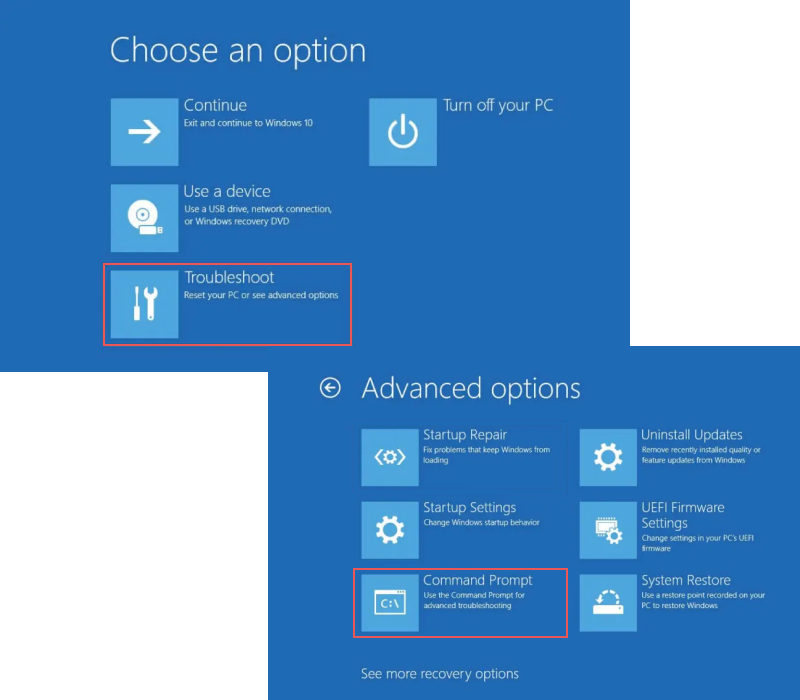
Enter the following commands and press Enter each time:
- bootrec /Fixmbr
- bootrec /FixBoot
- bootrec /ScanOs
- bootrec /RebuildBcd
Then type exit to quit Command Prompt. Eject the bootable disk and reboot your PC.
Further Help
Get a full guide to repair MBR in Windows 7/8/8.1/Vista/XP
bootrec fixboot not working? Check to fix bootrec fixboot access denied error.
Problem 2. Windows cannot be installed on the disk MBR. The selected disk has an MBR partition table
The "Windows cannot be installed to this mbr" error happens because an EFI system on your computer does not work with an MBR disk. That means your PC doesn't want to boot from a device with an MBR partition style. To fix it, a professional disk converter, disk management, and diskpart can help you walk through it.

Go back to the former part to convert MBR to GPT in three ways.
V. FAQs about Master Boot Record
I. What Is A Typical Symptom That Might Indicate The MBR Record Is Damaged?
- Loud clicking noise.
- Invalid partition table error.
- Invalid boot disk error.
- RAID not found error message.
The convincing answer is "Invalid partition table error".
Wait! Learn More Symptom! Read on to learn all signs that could indicated the MBR record is damaged.
Related article: What Typical Symptom Indicate MBR Record Damaged
II. Which of The Following Commands Can be Used to Create Partitions on Either A MBR or GPT Hard Disk?
Four Options you can see under this question:
- Fdisk
- Gdisk
- Parted
- Cfsck
The correct answer is "Parted".
III. What Is the Minimum Number of Partitions That the MBR Partitioning System Can Support?
The minimum number can be 1. If you create an MBR partition table instead of using a hard drive, the minimum number is 0.
Related Articles
- Computer Won't Boot? Causes & Fixes for PC Not Turning On [Full Guide]
- What Is Diskpart? How to Master and Use Diskpart Commands on Windows [Full Guide]
- Overall Guide to Learn What Is BIOS [Save Up to 99% of Your Time]
- What Is SSD and How Do I Set Up and Make Use of SSD [Beginners' Guide]